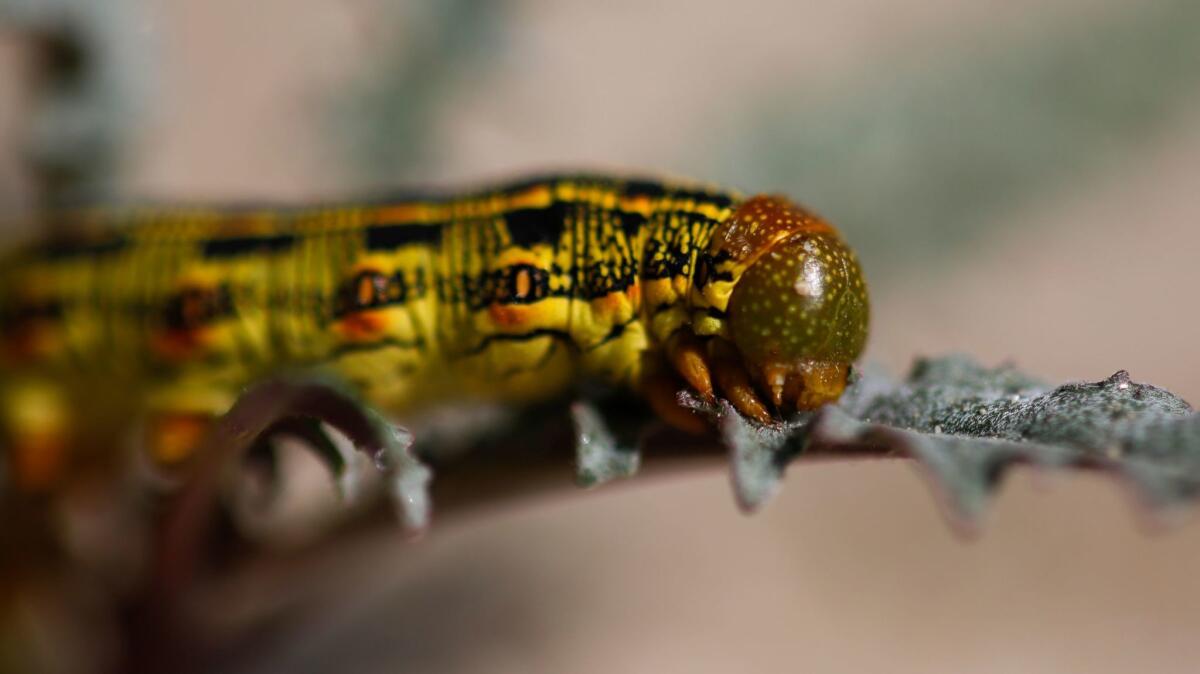A wet winter is bringing a bumper crop of insects

Long-legged bugs that look like mosquitoes on steroids are the first wave in what’s expected to be a prolonged inundation of insects this year in San Diego County and much of the rest of California.
Experts said heavy winter precipitation has fueled plant growth not seen since at least 2005, and that in turn should produce bumper crops of butterflies, moths, beetles, mosquitoes and even subterranean termites.
“Because of the rain we’ve had, there is an abundance of food out there. Insects are famously reproductive; they lay a ton of eggs, so if there is food available, they will get to work,” said Michael Wall, curator of entomology at the San Diego Natural History Museum.
Chris Conlan, the county’s supervising vector ecologist, put it in a more declarative way: “It’s going to be a buggy spring for sure.”
Some of the critters are harmless — including Tipula silvestra, the crane fly, that previously mentioned creature that resembles a gigantic mosquito (but actually has no relation to mosquitoes and doesn’t eat them). Crane flies don’t bite or sting or otherwise hurt people during their short lifespan.
Other insects, such as termites and caterpillars, can wreak havoc on houses and gardens with their voracious appetites. Still others are considered public-health threats because they can carry devastating, even deadly, diseases. West Nile virus, dengue fever and the Zika virus are among the threats associated with mosquitoes, which breed in lakes, pools and even droplets of standing water.
“All of the conditions are right for us to see more mosquitoes this year than usual,” Wall said.
Crane flies have been the first to create a buzz in San Diego County. Conlan said residents have been dialing in for weeks to report sightings of the insects. “People call because they think they’re big mosquitoes or daddy long legs. They look imposing,” he said.
Why are there so many crane flies, often mistakenly called mosquito hawks, this year? Wall said their eggs, which are laid in soil, are best activated when exposed to certain settings.
“They do best in moist, decaying leaves and dead organic matter, and there has been a lot of that recently,” he said.
The next likely insect to take flight in explosive numbers this spring is chewing contentedly on vegetation in Borrego Springs, Ramona, Torrey Pines and Chula Vista. Thousands of distinctive green caterpillars will soon turn into white-lined sphinx moths. These moths will be most prevalent in Anza-Borrego Desert State Park, where the wildflower bloom this year has been particularly impressive. But they’re also likely to swarm out closer to the coast.
These moths have been known to show up prolifically after notably wet winters. Conlan said Anza-Borrego visitors may get an up-close look at this species.
“It can be very common to the point where they’re crisscrossing the roads in huge numbers,” he said.
Sisson writes for the San Diego Union-Tribune.
More to Read
Sign up for Essential California
The most important California stories and recommendations in your inbox every morning.
You may occasionally receive promotional content from the Los Angeles Times.










